After Venkateswara idol was made and consecrated by king Sankhana on tirumala hills, regular worship went on for many years and then over a period of time, temple got neglected.
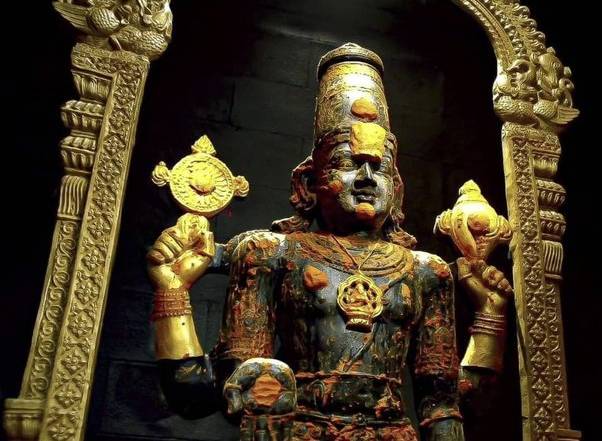
When Sage Bhrigu insulted Vishnu, Lakshmi left Vaikuntha and settled at Karavirapura (करवीरपुर), which is ancient name of Kolhapur in Maharashtra.
Vishnu reached Tirumala and started meditating under a tamarind tree near Pushkarini.
Anthills formed around and to accompany him, Brahma and Siva came as cow and calf.
Surya explains this to Lakshmi and asks her disguise as cowherdess and sell those cow and calf to Chola king.
This cow used to give its milk to Vishnu inside anthill and return with empty udder. Chola queen punished cowherds for lack of milk, who chased the cow and attacked the ant hill with an axe.
Cowherd died upon seeing injured Vishnu in human form.
After cow returned with blood stains, Chola King visited anthill to discover dead body of his cowherd.
Vishnu came out of anthill and cursed the king for mistake committed by his servant.
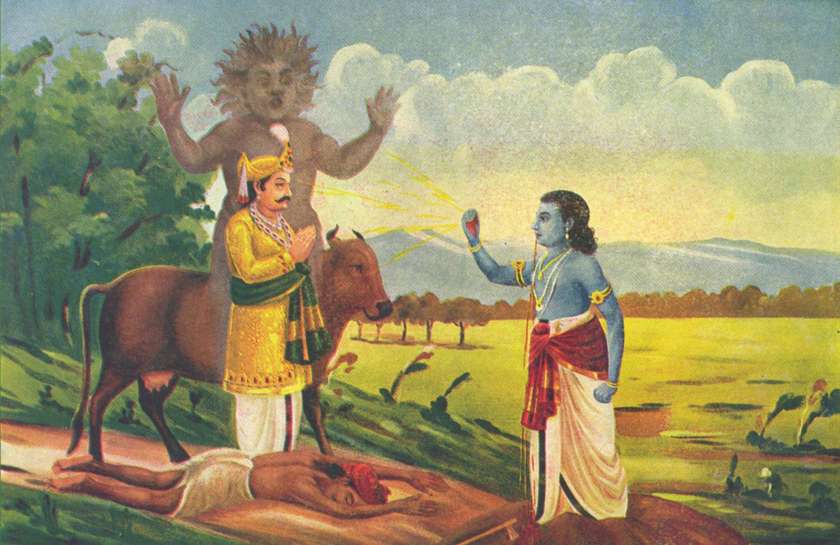
When king begged for mercy, Vishnu said that in next life, king will be born as Akasa Raja.
After performing his daughter’s marriage with him and placing his crown on his head, he will be relieved of the curse.
Since then, Vishnu started staying on that hill with the permission of Varaha, under the condition that first visit and worship will be done to Varaha.
During the end of Dwapara Yuga, Sri Krishna was asked by his foster mother Yasoda that, though she raised him, she could not witness his marriages.
Krishna replied that in next life, she will perform his marriage.
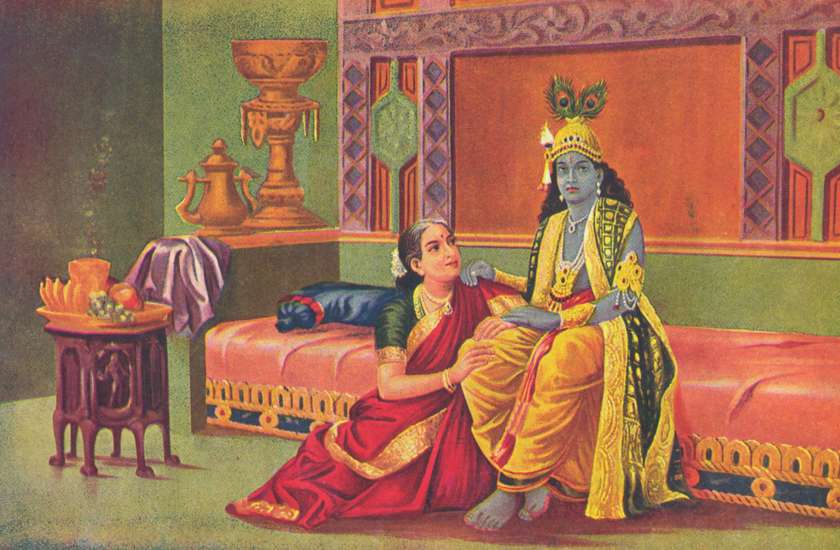
This Yasoda reincarnated as Vakula Devi and was serving Varaha on tirumala hill.
Vishnu, separated from Lakshmi, did severe penance for Bhagwan Surya in present day Thiruchanur at a pond called Panchami teertham.
Vishnu himself dug that pond, which is right now called Padma Sarovaram, filled it with golden lotuses and on bank of it did penance for 12 years.
This is adjacent to Padmavati Devi temple in Tiruchanoor and there is a Sri Surya Narayana Swamy temple now.
In 13th year, Lakshmi emerged on Karthika masa Sukla paksha Panchami tithi, Uttarashada star, Friday from Padma Sarovaram.
Vishnu was sure that Lakshmi will comeback as Padmavati Devi.
Cursed chola king was born in Lunar Dynasty (Chandra Vamsa) to one of the descendants of Pandavas, named Mitra Varma or Sudhanva (few times cited as Sudharma) and his wife, Pandya princess Manorama, when they were ruling over Tundira Mandala with capital at Narayanapuram.
He was named Akasa Raja.
This Akasa Raja grew up to marry Sakya princess Dharani but they did not have children.
When Akasa Raja wanted to perform yagna and started ploughing the land near Arani river on border of present day Andhra and Tamil Nadu, he found a golden lotus with a female baby in it.
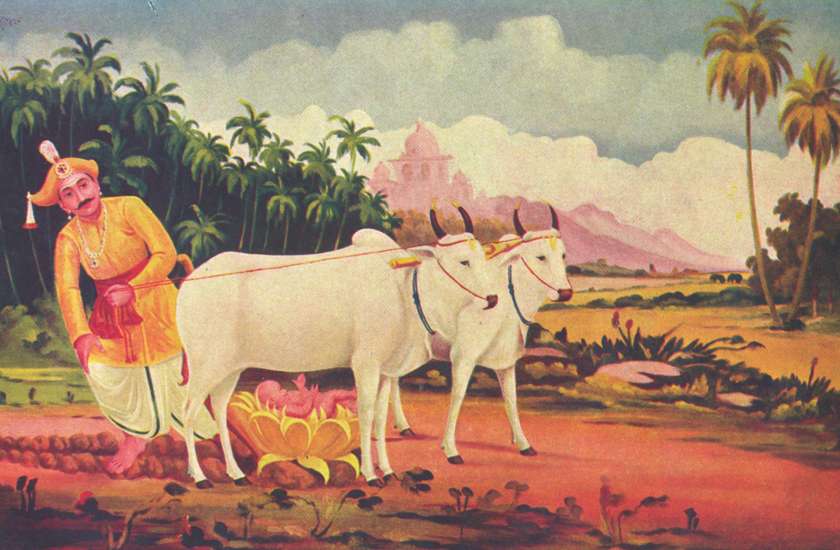
He adopted the child and named her Padmavathi (meaning – lotus like).
Few days after the couple adopting Padmavati, queen Dharani got pregnant and delivered a boy, who was named Vasudaana.
Vasudaana was born with 5 planets exalted in his horoscope, including Sun in Mesha Rasi (Aries).
Sri Krishna was alive during 18 June 3229 BCE and 23rd January 3102 BCE.
Next day, which is 24th January 3102 BCE Kali Yuga started, and few years later, Vasudana was born to Akasa Raja.
For 5 planets to be exalted, Vasudaana has to be born with Jupiter in Cancer sign, Saturn in Libra, Sun in Aries, Venus in Pisces and Moon in Taurus.
Jupiter returns to its exalted sign every 12 years, while Saturn returns to Libra every 30 years.
So, both these planets will be in exaltation approximately very 60 years.
Purana quotes that Akasa Raja was born after Vikramarka and saka kartas passed away, but those were not Vikramarka of 1st century BCE and Satavahana. There are many kings who had title of Vikramarka (as Arka means Sun). Pandya and Chola dynasties exsited since dwapara yuga aas Pandya means old and chola means new.
Birth of Padmavati and Vasudaana must have happened in early Kali Yuga and much before Gautama Buddha (1887 – 1807 BCE), which must be betwen 3102 – 1887 BCE.
If we start counting from one generation after the start of Kali Yuga (3102 BCE) and between 1887 BCE, there are about 1200 years and has only 20 years where Jupiter and Saturn are exalted.
In those 20 years, either Sun or Venus misses their respective exaltation signs for more than 10 times.
Also, the marriage muhurtham of Srinivasa and Padmavathi is in Vilambi nama samvatasara, Vaisakha month, Dasami tithi, Friday with moon in Uttara Phalguni nakshatra.
These details have to match with a date when Vasudaana was a young boy during their wedding.
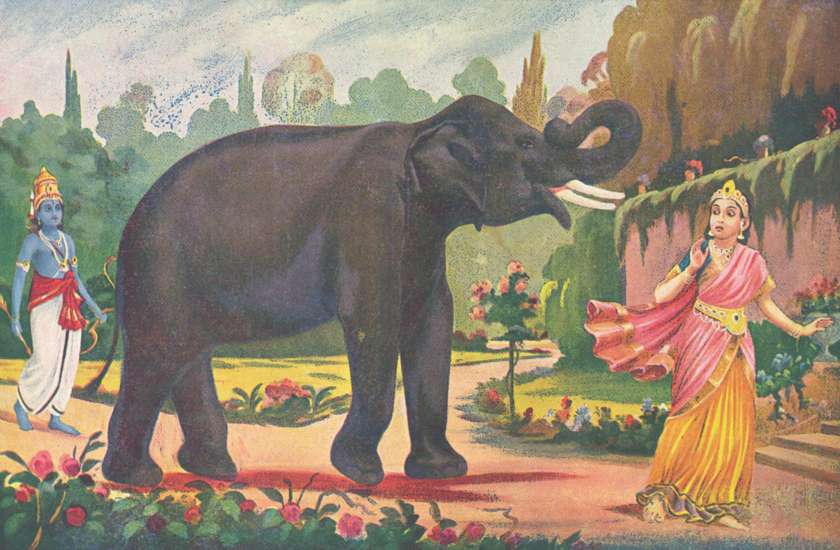
One day, Srinivasa went out on his horse with his sword to scare a herd of elephants, which scared and drove Padmavathi into her fort.
Srinivasa came to her fort and enquired about the princess but her attendants threw stones at him, citing that he was not a prince.
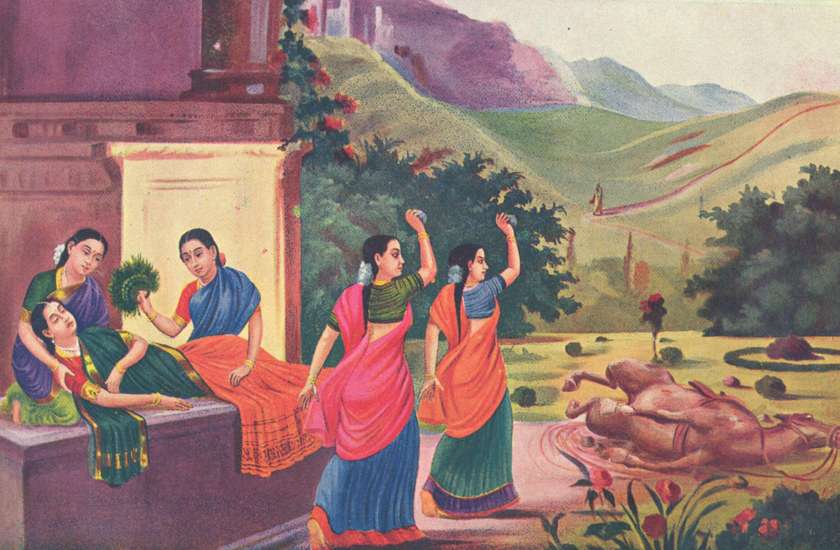
He went back to Vakula Devi, who took the responsibility of arranging this marriage and went out to meet attendants of Padmvathi, who were returning from a nearby Siva temple.
Akasa Raja fort was at Narayanapuram, which is present day Narayanavanam, and there is an ancient Eeswara temple within 1 km from Narayanavanam temple.
Padmavathi falls sick and her parents consult Brihaspati to know that she too is interested in Srinivasa, so they ask him to fix a suitable date for wedding.
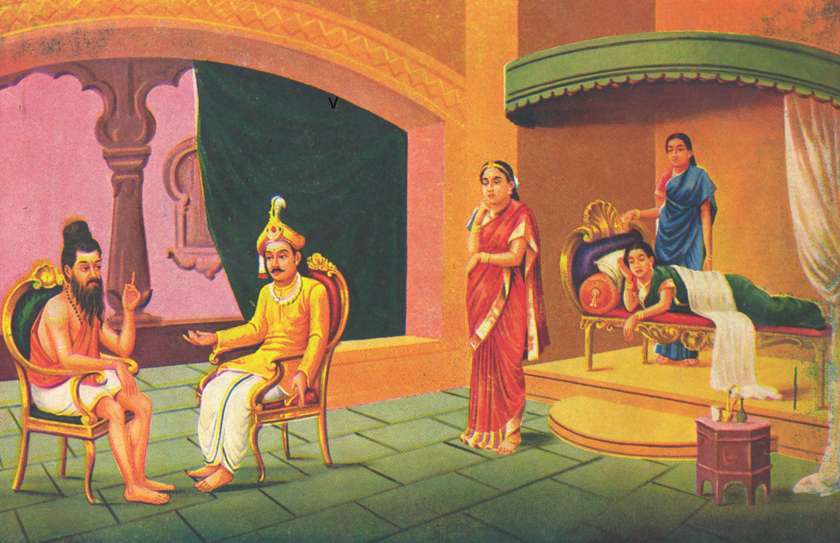
Padmavathi Srinivasa Kalyaanam took place in the 28th Kaliyuga (current), Vilambinaama Samvatsara, Uttaraayana, Vasantha Rithu, Vaisakha Maasa, Sukla paksha (bright fortnight), Dasami Thithi (10th lunar day), Bhargava Vaasara (Friday), Uttara Phalguni Nakshatra, close to sunrise. He concludes this muhurtham as birth nakshatra of Srinivasa was Sravana and that of Padmavathi was Mrigasira, so Uttara Phalguni suits both of them.
This muhurtham is on 9th March 2602 BCE between 6:45-7:00 AM as auspicious planet Jupiter was in Vrishabha Lagna.
9 years earlier, on 10th March 2611 BCE, Vasudaana, younger brother of Padmavathi was born with 5 planets (Jupiter, Saturn, Sun, Venus and Moon) exalted.
There are no other dates which match exactly with these 2 dates and planetary positions described in puranas, during early Kaliyuga.
Srinivasa – Padmavathi kalyanam was performed at present day Narayanavanam, which is 42 km away from tirupati.
Even today, we can see a large grinding stone (తిరుగలి), which was used to make herbal bath powder with many herbs and grains for applying to bride and groom before wedding.
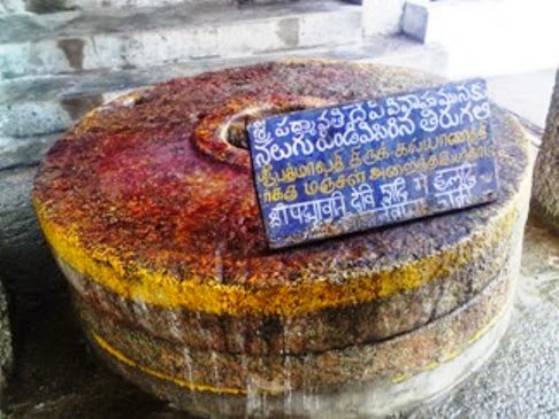
Before wedding, Srinivasa went to a place where all rishis were in penance and seeked their blessings. That place today is Appalayagunta, where Prasanna Venkateswara Swamy is seen with a sword which he used to scare elephant herd.
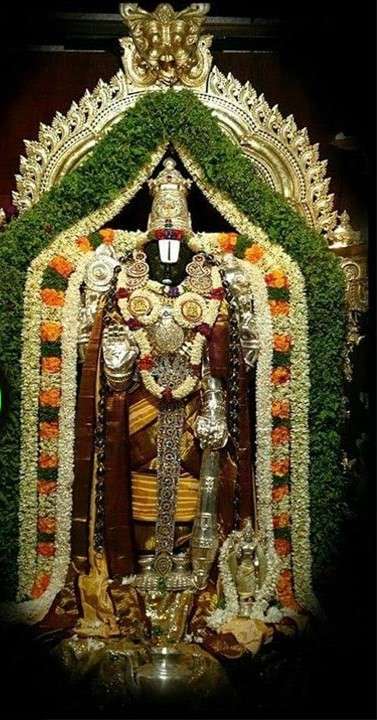
After wedding, they stayed for 6 months at Srinivasa Mangapuram, 12 km west to tirupati.
Akasa Raja attained salvation after placing crown on head of Srinivasa during wedding and his brother Tondaiman took over a king, as vasudaana was still young.
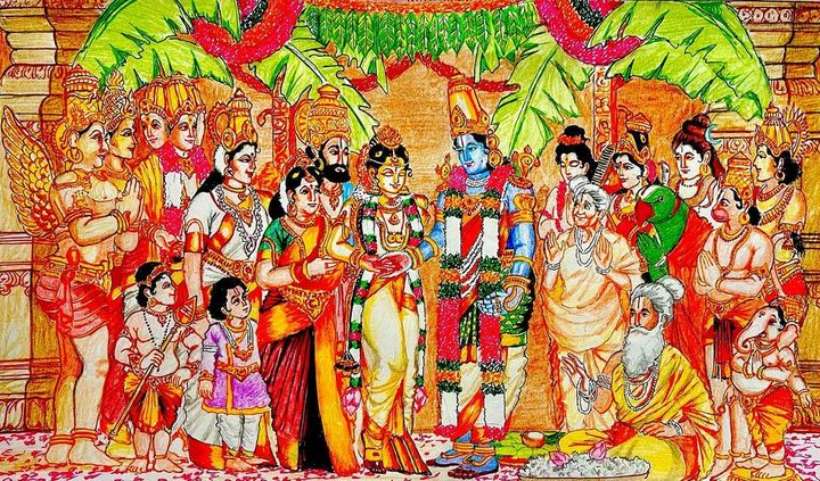
Srinivasa took Tondaiman to the top of hill and showed him the place near pushkarini, where Andhra Kng Sankhana first installed his idol as Vishnu.
He also showed the Tamarind tree under which he stayed in an ant hill for many years and asked him to build a fort like temple for him to stay there.
After few years, Vasudaana grew up and wanted his father’s kingdom.
Srinivasa had to intervene and divide the kingdom where Tondaiman would rule south to tirumala and Vasudaana would rule northern part.
Srinivasa in the form of Venkateswara remained in tirumala, while Padmavati remained at Tiruchanoor.
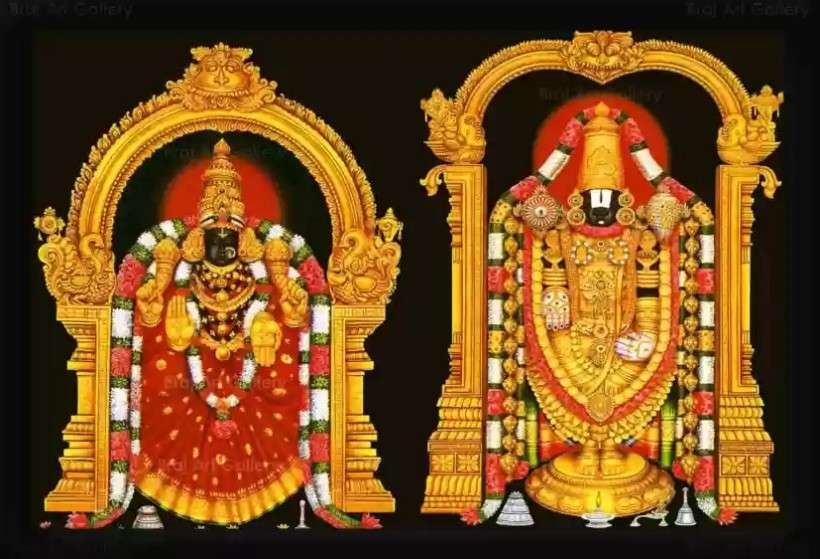
Many changes were done to the tirumala temple over years. Gopinatha was the first known Vaikhanasa Aagama priest at tirumala.
Vaishnava Sabha which was formed more than 2500 years in Tiruchanoor, used to decide daily activities of tirumala.
Utsava murthi of Bhoga Srinivasa was donated by the Pallava queen Samavai (aka Kadavan – Perundevi) in the year 614 CE.
Tamil classic Silappadhikaram states that the idol on the hill represented Vishnu (Sengan Nediyon).
The description states that the Sun and the Moon illumined the deity shows that there is no covering at the top or that the covering was of a pavilion type.
Ramanujacharya in 11th century introduced Vaishnava methods of worship and Jeeyar mutt in tirumala.
Later, Chola, Pandya, Pallava and Vijayanagara kings renovated and maintained the temple.
